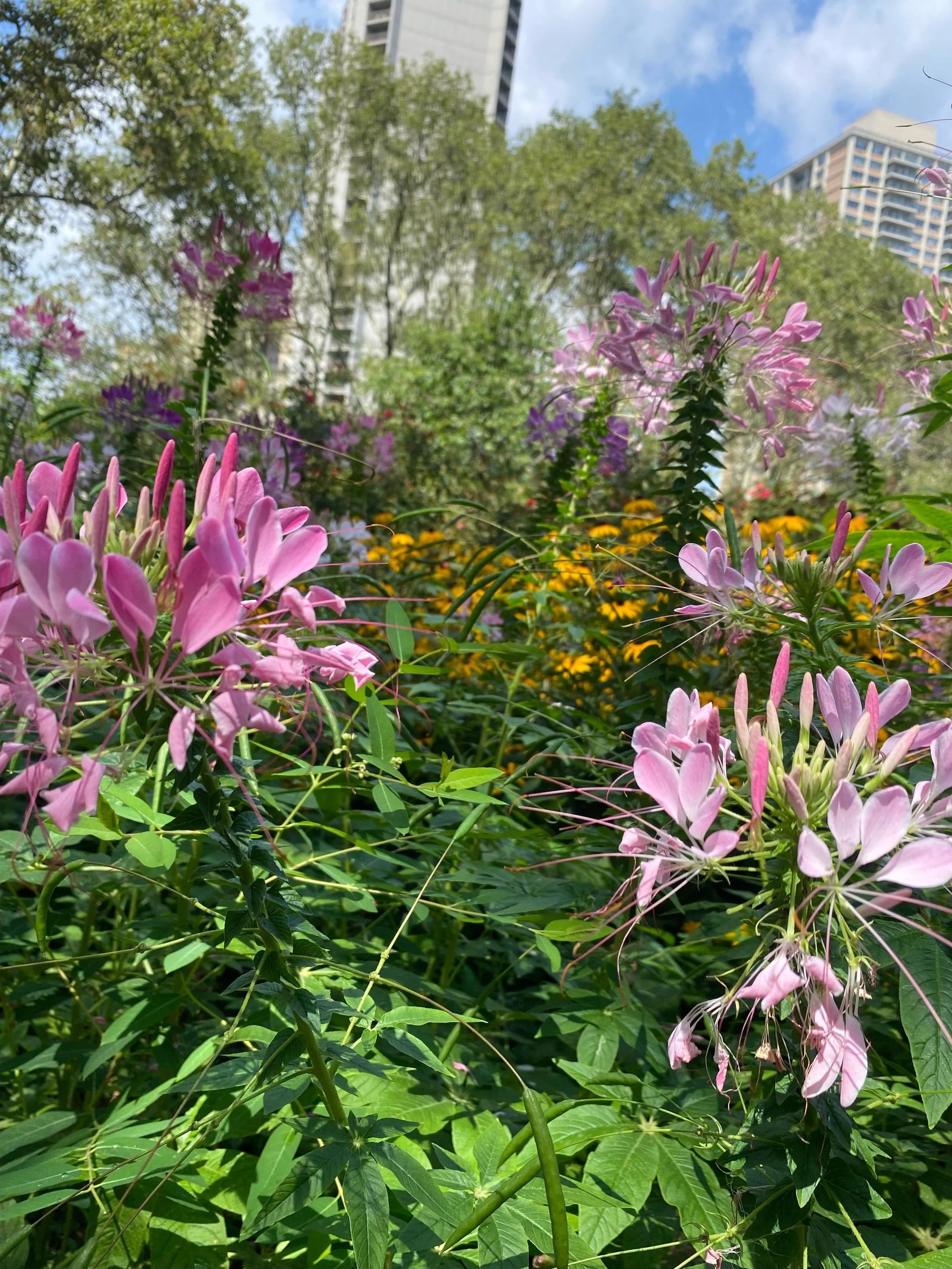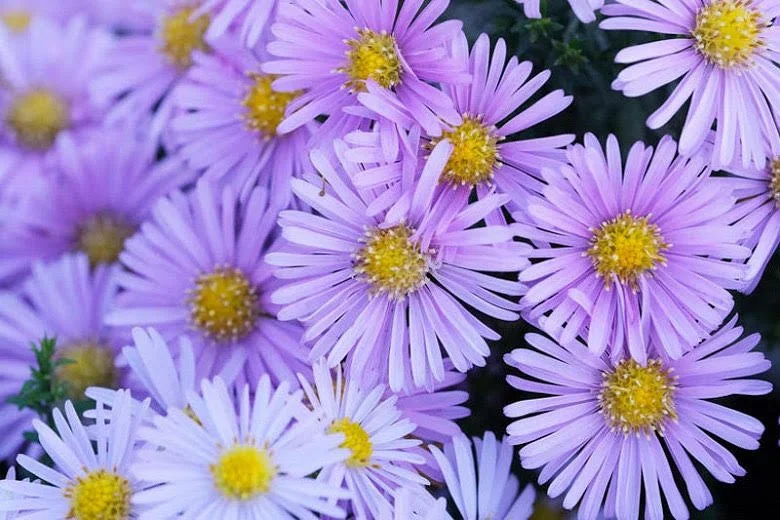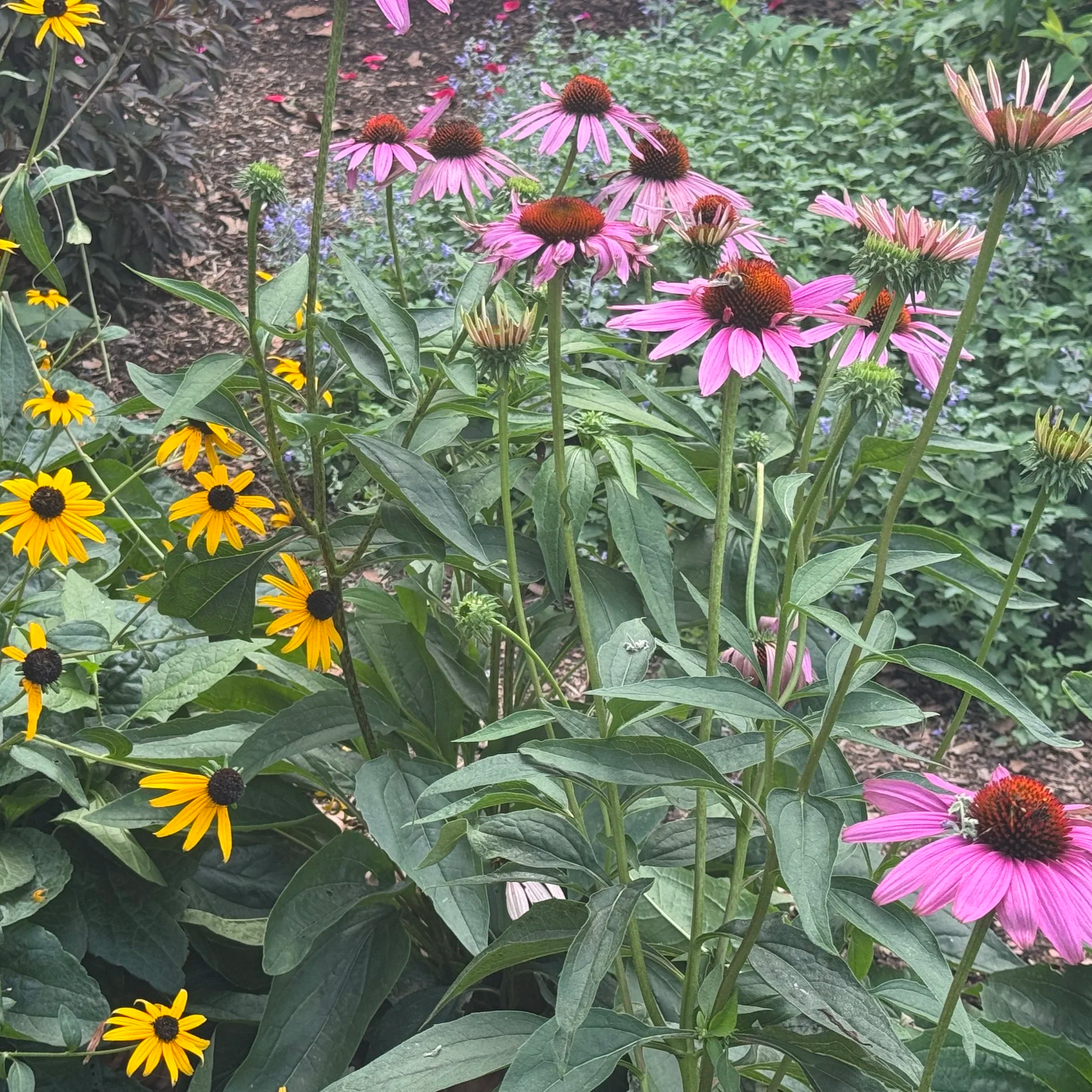Native Plants and Pollinator Gardens in Cadman Plaza Park
The Cadman Park Conservancy is in the process of developing pollinator gardens in Cadman Plaza Park. These gardens will be vibrant and colorful, and full of native plants that feed and host pollinating insects.
New Beehive
Be aware that honeybees found a home in one of our trees. Unfortunately, the opening is about 3' off the ground (kid height!) and right next to the path. We recognize the vital role bees play in our ecosystem and in our pollinator garden. Help us safeguard these critical pollinators while we apply for permission to fence off the tree to protect the hive and kids.
Pollinator of the week
Weigelas or “Wine and Roses”
Weigelas are a great addition to any pollinator garden. The trumpet shaped flowers are attractive to several species of pollinators including bees, butterflies and hummingbirds. They like full sun or partial shade and moist, well-drained soil.
Pollinator of the week
Symphyotrichum cordifolium -
Blue wood-aster
Blue Wood-Aster is herbaceous perennial native to eastern and central North America, currently flowering in our pollinator garden. Some of its wildlife value is that it's a host plant for the Pearl Crescent butterfly, the flowers attract bees and butterflies and the songbirds eat the seeds.
Pollinator of the Week: Vernonia gigantea
Giant Ironweed: a 6-8 foot tall, tough perennial with large lance-shaped leaves with panicles of rich purple blooms appearing in mid to late summer. Giant Ironweed prefers full to part sun in moist to wet soils. Ironweeds readily self-sow and provide nectar to butterflies. The perennial is often used in screenings, large borders and naturalizing in meadows.
Pollinator of the Week: Solidago rugosa ‘Firework’
Goldenrod: This plant gives sensational vibrant golden flowers that burst from the plant like ‘Fireworks’. The yellow flowers in late summer at a time when it’s hard to find many bloomers. A proficient seeder, expect to have many more stems of this in years to come than originally planted.
Pollinator of the Week: Eutrochium fistulosum
Joe-Pye Weed-If you're looking for a mid-level of maintenance this tall native perennial, these get up to 7-12ft tall giving a dramatic accent in the back of a garden. Grows mostly best in full sun/part shade. Considered a powerhouse for beneficial insects. Only downside, the flower head can become heavy causing the stem to collapse, if your looking for shorter and sturdier there’s options! Eutrochium purpureum and Eutrochium maculatum grow more in the range of 5-7ft tall.
Pollinator of the Week: Symphyotrichum novibelgii
New York Aster-Burst of blooms late summer early fall. Grows best in full sun, or partially shade and very drought tolerant! I always recommend pinching back the early growth before mid summer, which makes it look less floppy/unkept aesthetically during the fall.
Pollinator of the Week: Pycnanthemum muticum
Short Toothed Mountain Mint - Great compacted habit, with silvery bracts. Handles full sun and light shade. A top notch pollinator plant. *Also, has square stems which means it in the mint family*

Why are native plants so important?
Every human, animal, bird and insect on this planet gets their energy from plants, either directly by eating plant material or indirectly by eating something that ate plants. Plants convert the sun’s energy into food, which is needed to support life. The birds and insects of the Northeast have evolved and specialized to only eat certain native plant types that have in turn, evolved to thrive in our environment. You may have heard that Monarch butterfly caterpillars can only eat the leaves of milkweed plants, but there are many, many more types of birds and insects that have co-evolved and rely on native plants. When native plants are replaced by non-native ornamental species, the natural ecosystem is disrupted.
What will we plant at Cadman Park?
Common Milkweed, Mountain Mint, Golden Rod, Joe Pye Weed, Asters, Coneflowers, Red Chokeberry, Black Eyed Susans. Lanceleaf Tickseed, Cardinal Flowers, Giant Ironweed













